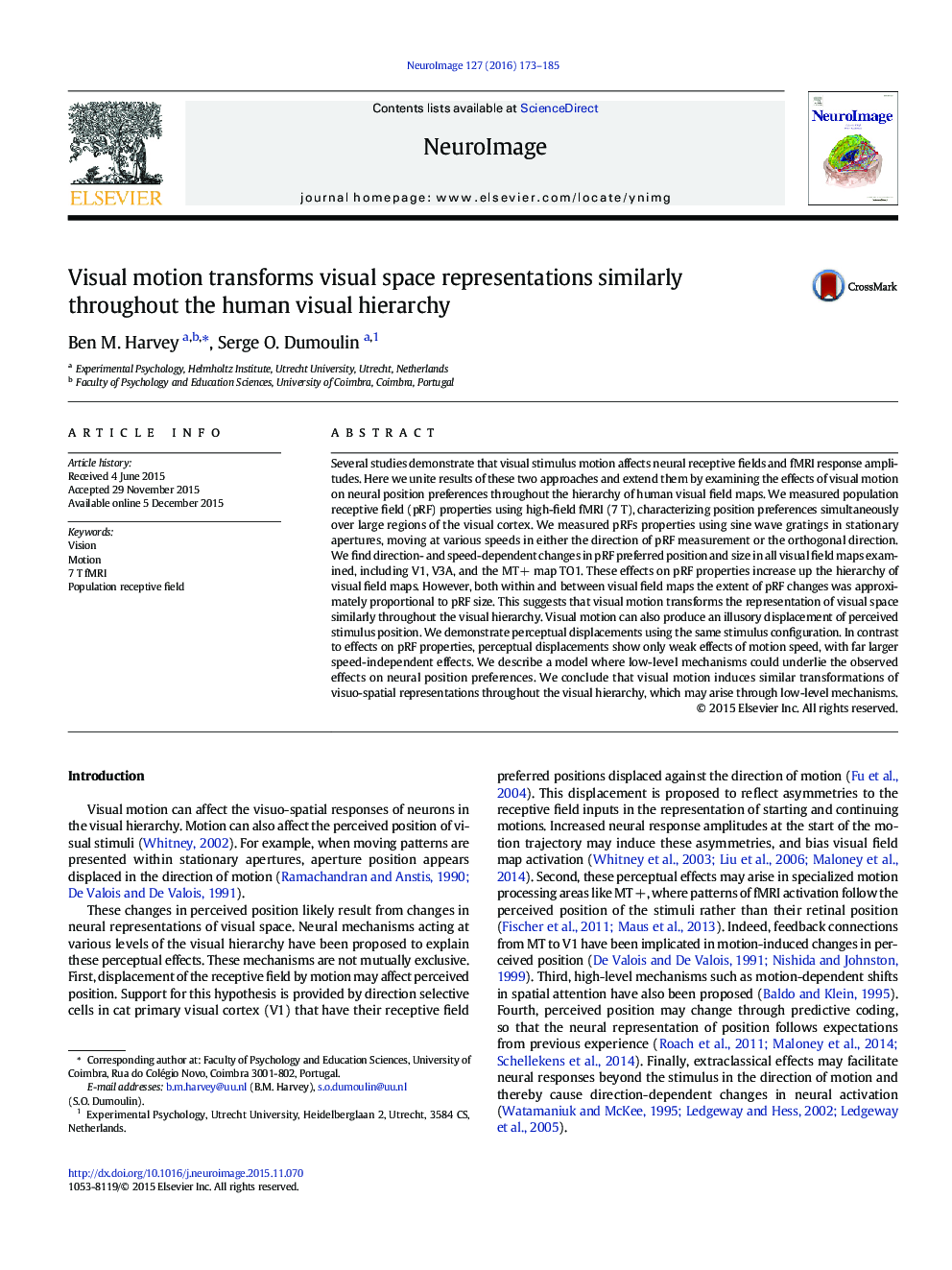| Article ID | Journal | Published Year | Pages | File Type |
|---|---|---|---|---|
| 6024555 | NeuroImage | 2016 | 13 Pages |
â¢Visual motion has speed- and direction-dependent effects on pRF size and position.â¢PRF changes are found in all visual field maps measured, including V1, V3A and TO1.â¢PRF properties change in proportion to pRF sizes in all visual field maps.â¢These changes may arise through low-level response properties.
Several studies demonstrate that visual stimulus motion affects neural receptive fields and fMRI response amplitudes. Here we unite results of these two approaches and extend them by examining the effects of visual motion on neural position preferences throughout the hierarchy of human visual field maps. We measured population receptive field (pRF) properties using high-field fMRI (7Â T), characterizing position preferences simultaneously over large regions of the visual cortex. We measured pRFs properties using sine wave gratings in stationary apertures, moving at various speeds in either the direction of pRF measurement or the orthogonal direction. We find direction- and speed-dependent changes in pRF preferred position and size in all visual field maps examined, including V1, V3A, and the MTÂ + map TO1. These effects on pRF properties increase up the hierarchy of visual field maps. However, both within and between visual field maps the extent of pRF changes was approximately proportional to pRF size. This suggests that visual motion transforms the representation of visual space similarly throughout the visual hierarchy. Visual motion can also produce an illusory displacement of perceived stimulus position. We demonstrate perceptual displacements using the same stimulus configuration. In contrast to effects on pRF properties, perceptual displacements show only weak effects of motion speed, with far larger speed-independent effects. We describe a model where low-level mechanisms could underlie the observed effects on neural position preferences. We conclude that visual motion induces similar transformations of visuo-spatial representations throughout the visual hierarchy, which may arise through low-level mechanisms.
